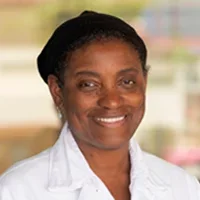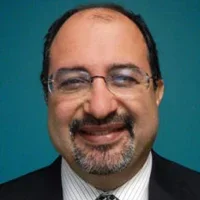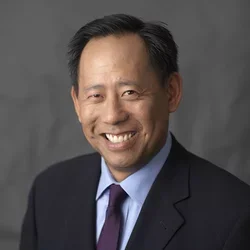About Us
Mission and Vision
The UCLA Clinical and Translational Science Institute is a research partnership of the University of California Los Angeles, Cedars-Sinai Medical Center, Charles R. Drew University of Medicine and Science and the Harbor- UCLA Medical Center/Lundquist Institute for Biomedical Innovation. Our mission is to bring biomedical innovations to bear on the greatest health needs of Los Angeles County, which, with nearly 10 million people, is more populous than 42 states.
In the past 10 years, we have built a robust research infrastructure to support our mission. In partnership with the community, we have made important advances against the leading causes of preventable disability and death. Supporting these advances is a streamlined regulatory infrastructure. We have instituted scientific review, reduced time-to-study-activation by 42%, and achieved 100% compliance with ClinicalTrials.Gov. As we enter our next decade, we will use translational science principles to accelerate the effectiveness, efficiency and engagement of our infrastructure and the research it supports. As we do so, we will build on our progress by augmenting the integration with our institutional hub partners and broadening collaborations in the community as well as with investigators outside the health professions. Through new T1-T4 seminars and team science trainings and opportunities, we will equip our trainees to conduct multidisciplinary team science across the translational spectrum. Through implementation of a systematic evaluation, we will quickly identify and address areas to improve.
Aims
To achieve our mission, the UCLA CTSI has five specific aims.
- Enhance education and training to prepare and expand the translational workforce
- Engage stakeholder communities in multidisciplinary team science and disseminate successful models of collaboration
- Integrate all populations across the lifespan into translational research
- Improve methods and processes to accelerate efficient, high-quality, multisite research
- Provide informatics solutions to advance high-impact translational science
The UCLA CTSI is organized into 12 programs through which we will achieve the five aims.
Our governance and operational structure
Learn more about the UCLA CTSI organizational structure including the roles of the Directors, the Leadership Group and the Program Leaders.
Our infrastructure includes:
CTSI Directors



Arleen Brown, MD, PhD, is a co-director of the CTSI and has led the Community Engagement and Research Program since its inception. A leader in T3/T4 research, Dr. Brown is a general internist and health services investigator whose research has focused on the contribution of the individual, health care system and community characteristics for adults with chronic conditions. She serves on the Association for Clinical and Translational Science (ACTS) Partners for the Advancement of Community-Engaged Research (PACER), among many others. She serves on the editorial board of the Journal of Clinical and Translational Science.
Arash Naeim, MD, PhD, is a co-director of the CTSI and has co-led the Network Capacity and Regulatory Knowledge and Support Program since its inception. Dr. Naeim is a Professor of Medicine in both the Division(s) of Hematology-Oncology and Geriatric Medicine at the David Geffen UCLA School of Medicine as well as a Professor of Bioengineering in the Henry Sameuli School for Engineering and Applied Science. He is Chief Medical Officer for Clinical Research for UCLA Health with additional leadership roles in the Jonsson Comprehensive Cancer Center, Institute for Precision Medicine, and Garrick Institute for Risk Sciences. Dr. Naeim has a Ph.D. in Public Policy from the RAND with research interests that include outcomes research, cost-effectiveness analysis, modeling of health and frailty, and the role of technology in medicine. He is a UCLA Physician Informaticist board certified in Clinical Informatics and the Co-Director for the Center for SMART Healthcare that aims to use technology, data and analytics to reduce risk, integrate innovative technology, and advance precision medicine.
Mitchell Wong, MD, PhD, is a co-director of the CTSI and has co-led the KL2 Program since its inception. Dr. Wong is a Professor of Medicine at UCLA in the Division of General Internal Medicine and Health Services Research and Director of the DGSOM Office of Physician Scientist Career Development. He received his undergraduate degree from Williams College in 1989 and his medical degree from UC San Francisco in 1994. He obtained his clinical training in General Internal Medicine at The New York Hospital/Cornell Medical Center. After completing a PhD in Health Services Research from the UCLA School of Public Health, he joined the UCLA faculty in 2001. His research focuses on how education, school environments and social networks influence health. He is currently funded by NIDA to examine the impact of successful school environments on adolescent health and health behaviors (tobacco, alcohol, drug use, sexual behavior and engagement in violence). He is also the director of the UCLA/CTSI Healthy Neighborhood Schools Initiative, which develops, tests, and disseminates school-based interventions to improve the health of low-income adolescents. He has published in the top journals of his field including The New England Journal of Medicine, American Journal of Public Health, JAMA Pediatrics and JAMA Internal Medicine.
Role of the CTSI Directors. The CTSI Directors report to UCLA Chancellor Julio Frenk. The CTSI Directors chair the Leadership Group and are responsible for CTSI operations, budgets, planning and policy. In concert with the Leadership Group, the Directors prioritize activities, allocate resources, set decision-making policies and procedures and assist in conflict resolution. Additional responsibilities include the integration of our biomedical research infrastructure with other UC medical campuses through UC Biomedical Research Acceleration, Innovation and Development. The Directors serve on the BRAID Executive Committee. Further, the Directors serve as the central liaison between the CTSI and its advisory boards as well as NCATS and the national CTSA network.
Our Hub partners enhance our transformative mission through collaboration and complementary strengths:
- Charles R. Drew University of Medicine and Science (CDU) is a private non-profit university committed to promoting a culture of innovation, creativity and scholarship, and partners with the university's community of scholars to support high impact research.
- Cedars-Sinai is one of the largest non-profit medical centers in the US and contributes clinical research expertise and service delivery platforms. It provides strength in mentoring translational researchers, community-based pipeline programs and capacity for biomedical innovation.
- Harbor-UCLA is a public hospital, part of the LA County Department of Health Services, serving a broad patient population in southwest Los Angeles County. It is home to The Lundquist Institute for Biomedical Innovation, an independent, non-profit biomedical research institute focused on discovery and translational research.
- UCLA is a public research university with the core mission of education, research and service. It is committed to academic excellence in basic, translational and clinical research. It provides extensive core facilities, health services research expertise as well as implementation and dissemination science, and participating Schools of Public Health, Engineering, Business, Education, Public Policy, Nursing, Medicine and Dentistry.
The CTSI Leadership Group includes the CTSI Directors; Senior Associate Directors, who are domain experts and site leaders; Associate Directors, who are associate site leaders; community stakeholder representatives; and the Administrative Director. The Leadership Group sets the Hub’s strategic direction, including training and educating young investigators, promoting multidisciplinary research, developing community partnerships and integrating large-scale research infrastructure programs across our partner institutions. Leadership Group members are institutional leaders and experts in their domains. The Leadership Group meets monthly.
Senior Associate Directors and Associate Directors
Senior Associate Directors and Associate Directors are clinical and translational science leaders from a range of fields. They bring a range of thought necessary to support successful multidisciplinary team science. Directors with primary responsibility for one of the partner institutions or for oversight of a key translational domain, including clinical research, community and collaboration, informatics and workforce development, have been named Senior Associate Directors consistent with their roles. Senior Associate Directors are involved in succession planning. Senior Associate Directors (domain experts and site leads) are chosen by the Directors in consultation with the Institutional Steering Committee.
Site Leaders and Associate Site Leaders
Cedars, Harbor and CDU are full partners in the CTSI and participate in all CTSI programs. Site Leaders and Associate Site Leaders are clinical and translational science leaders with primary responsibility for CTSI programs at their home institutions. Associate Site Leaders are new positions created in response to the expansive growth in CTSI operations over the past 10 years. Site Leaders are chosen by the CTSI Directors, in consultation with the ISC. Associate Site Leaders are chosen by the Directors, in consultation with Site Leaders. Site Leaders and Associate Site Leaders report in a matrix fashion to the CTSI Directors and the institutional leaders at their site.
The CTSI has 12 programs and two training programs, the KL2 and the TL1. Each program has one or more leaders selected by the CTSI Directors in consultation with the Leadership Group as well as institutional leaders. Program Leaders are operational leaders with direct oversight of their programs. They coordinate program activities across our partner institutions to achieve program goals. Program leaders report to the Directors. Faculty from all four CTSI partner institutions participate in program leadership. Program Leaders meet weekly with the CTSI Directors, Site Leadership and training program Directors at the Program Area Leadership Meeting (PALM). The purpose of the PALM is to exchange information on program activities, identify opportunities for collaboration and integration, and report progress on program metrics and performance goals.
